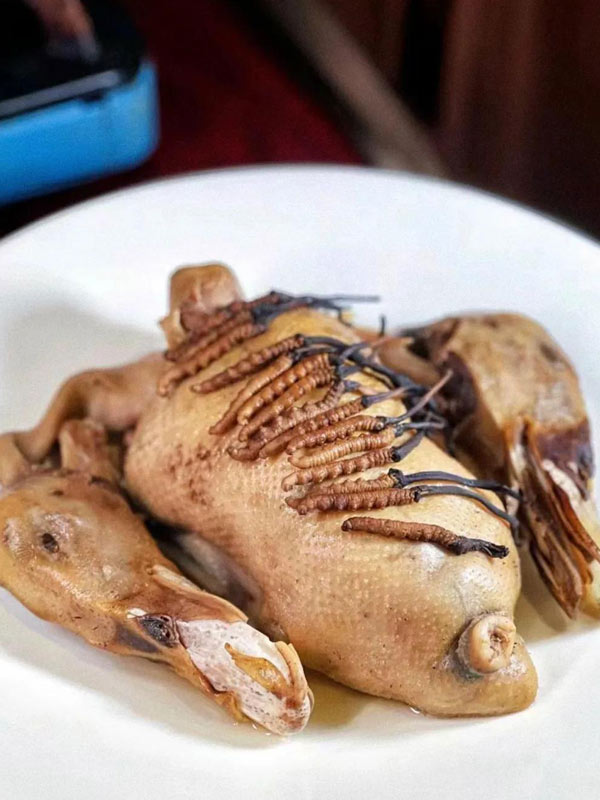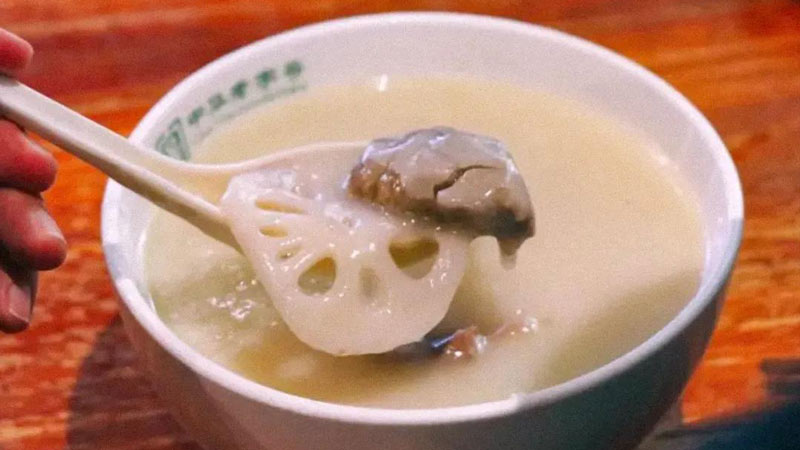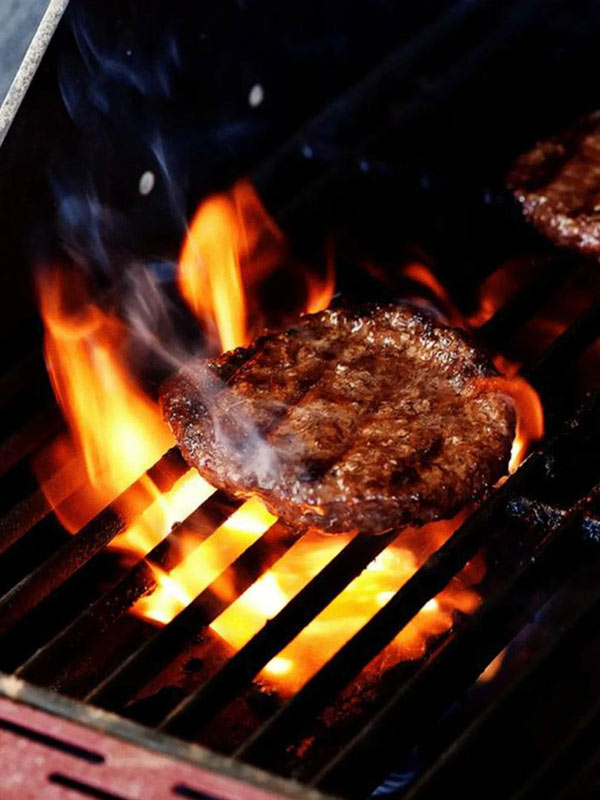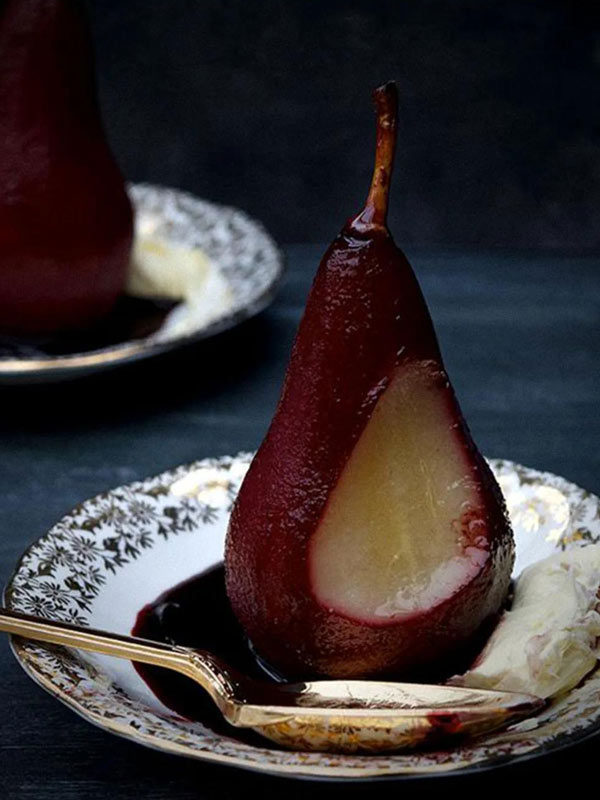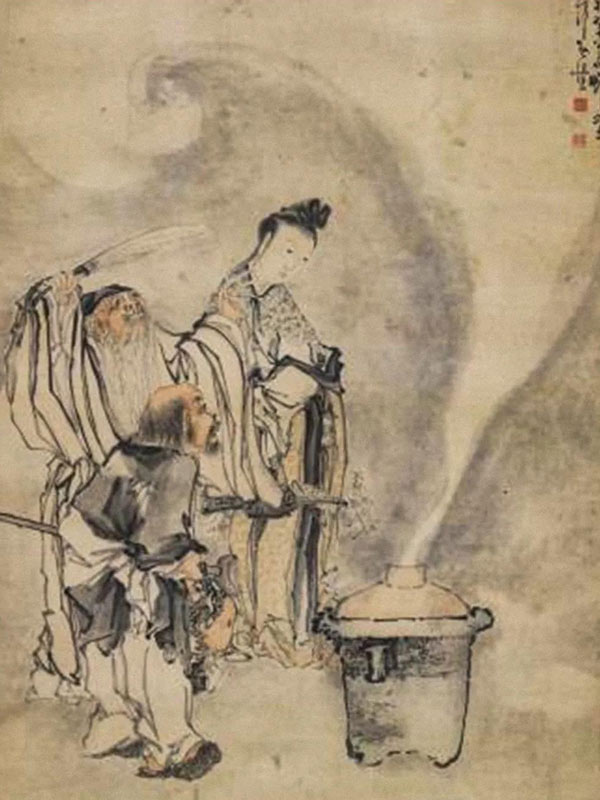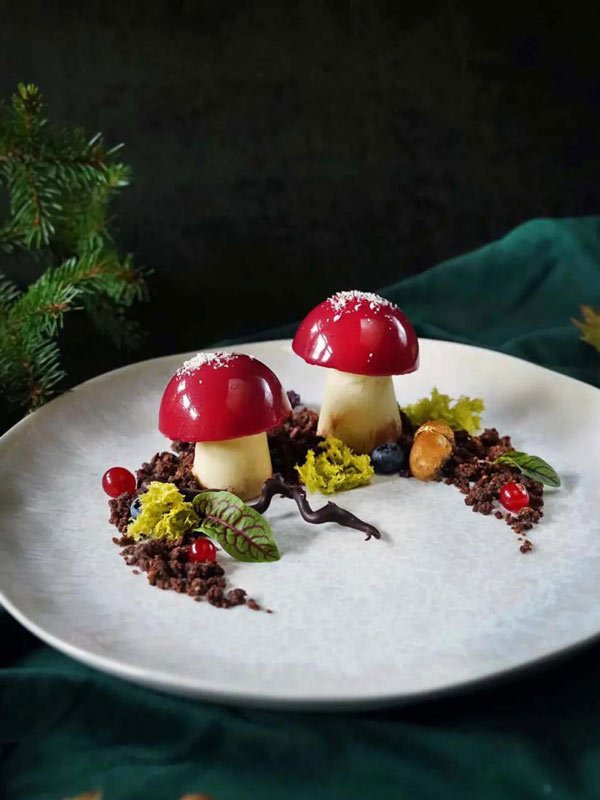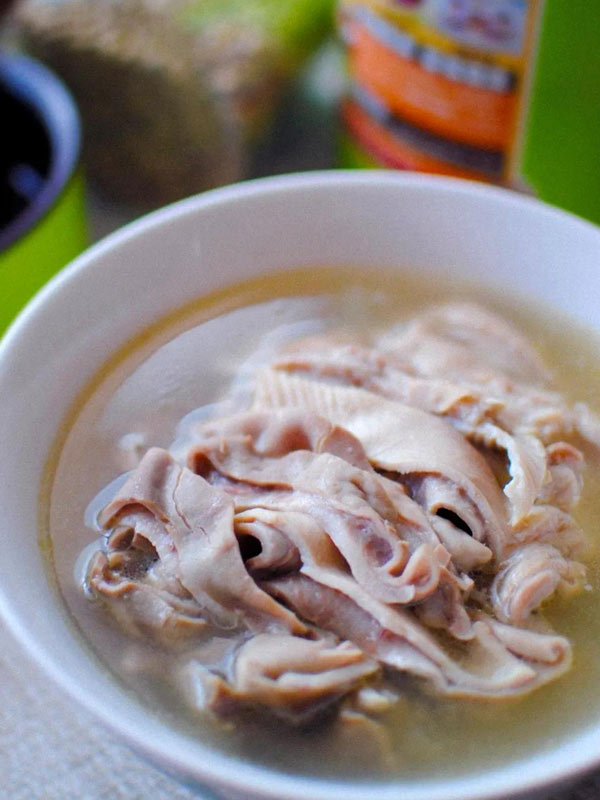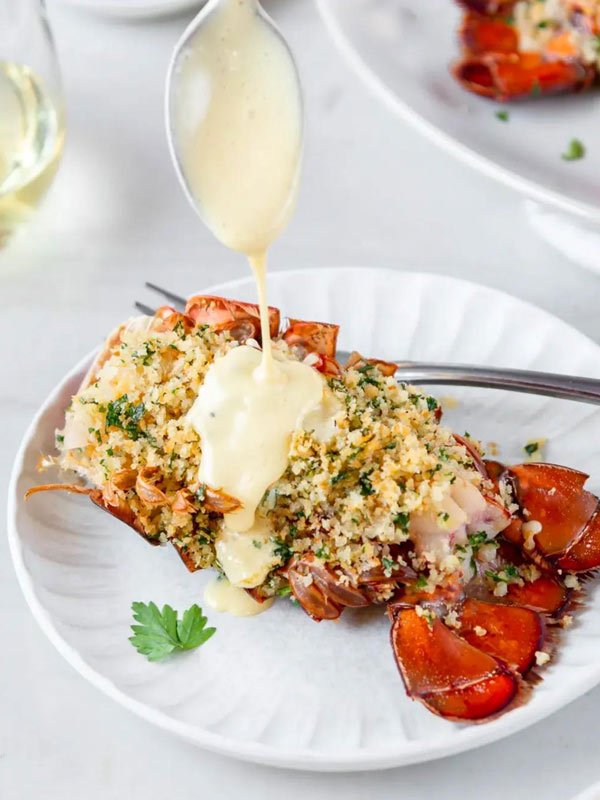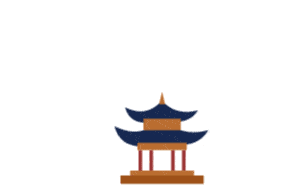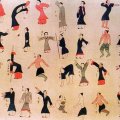"Come over next Saturday night," Chef Yang Boying said. "I'll make an old school dish—cordyceps duck. You won't find it in restaurants these days."
I arrived right on time. Yang lifted the lid off a steaming pot, releasing the scent of something rich and ancient. Inside was a rustic farm duck, slow-steamed for four hours in a dark, nourishing broth. Sprouting from the skin were black threads that looked like rat tails—twenty pieces of cordyceps, carefully skewered into the flesh. The sight was strange, even a little eerie, but the aroma was unforgettable.
Cordyceps duck (虫草鸭子), a medicinal classic from 19th-century Sichuan, embodies the Chinese belief that food and medicine share the same root. Once served at Chengdu's Tong Ren Tang—a pharmacy that also sold nourishing dishes—it was never just a meal. Cordyceps, a rare fungus that grows from caterpillars, is prized in traditional Chinese medicine for enhancing energy and immunity. The method used to cook this duck—piercing it and inserting the fungus by hand—was both precise and poetic.
Today, few make it this way. The cordyceps are usually tossed into the pot with the duck, no fancy presentation. But Yang prefers the old technique: skewering each piece so it peeks out of the meat. A little creepy? Maybe. But the result is tender, silky duck soaked in medicinal flavor. The rich gravy, poured back over the meat, adds an extra layer of umami. Nine of us devoured a five-pound bird in minutes.
Was it the taste or the promise of "qi (气)" that made it so satisfying? Who knows? In Chinese cooking, those things aren't easily separated. Health and flavor are one.
After dinner, Yang recalled other dishes now lost to time. "There was fritillaria chicken (贝母鸡)," he said. "Not chicken steamed with fritillaria bulbs—but chickens that ate fritillaria as they grew." Same with roast ducks fed deer antler, like the ones Yuan Shikai supposedly ate in Beijing. In these dishes, medicine wasn't just added to the pot—it was bred into the animal itself.
Fritillaria is used to treat coughs and lung ailments; deer antler is seen as a potent tonic. Were these dishes fact or folklore? Probably both. But they reflect a broader truth in Chinese cuisine: eating isn't just about satiety. It's about healing, longevity, and balance.
Unfortunately, many of these dishes have vanished. Cordyceps now cost a thousand times more than they did forty years ago. Once a folk remedy, the duck has become a luxury. The same fate befell many other health foods in history—like ginseng soup and bird's nest delicacies once reserved for aristocrats or the sickly heroines of Qing novels.
Even humble dishes carry this medicinal mindset. In Taiyuan, Shanxi, there's a breakfast soup called tounao tang (头脑汤)—literally, "head-clearing soup." No brains involved, just mutton, galangal, noodles, Chinese yam, astragalus, lotus root, rice mash, and pickled chives. Locals also call it "Eight Treasures Soup (八珍汤)." Served with stuffed buns or shumai, it's said to clear your mind and warm your bones.
Whether it's rare fungus in a duck or mutton soup on a cold morning, the Chinese kitchen has always doubled as a pharmacy. The chef is not just a cook but a healer. Meals are medicine, flavor is function, and nourishment is holistic. Medicine and food share the same root.
 Folk Remedies Rooted in Everyday Life
Folk Remedies Rooted in Everyday Life
But medicinal cuisine has never been reserved only for officials and the wealthy. Across China, ordinary people have long crafted their own versions of healing dishes—rooted not in luxury, but in daily life and necessity.
Take tounao tang in Taiyuan, Shanxi, for example. The same "head-clearing soup" we mentioned earlier is made by simmering lamb with astragalus (an herb believed to boost energy and immunity), along with Chinese yam and lotus root. The broth is then enhanced with fermented rice mash soaked in medicinal wine—a concoction ideal for relieving hangovers, clearing the mind, and inducing a gentle sweat to expel "dampness," a concept in traditional Chinese medicine referring to sluggish or stagnant energy in the body.
In Longyan, Fujian, Hakka boatmen have their own remedy called jiumen tou, literally "nine-gate head (九门头)." It's a warming beef hotpot infused with local herbs like fragrant vine root and Vietnamese coriander, believed to ward off cold and damp—a bright, herbal note in the otherwise rich and earthy flavors of southern Fujian cuisine.
Along the coast of Dongtou in Zhejiang, generations of fishermen have developed a deep, ocean-based herbal wisdom. They simmer aged dried cuttlefish with golden needle flowers and preserved radish to treat ulcers and toothaches. Another local favorite: yellow croaker fish maw stewed with rock sugar, said to relieve dizziness and fatigue—perfect after long days out at sea.
Then there's the humble yet powerful danggui black bean eggs (当归黑豆蛋) found on the streets of Changsha. This dish is a modern adaptation of a traditional remedy recorded in the 18th-century text Compilation of Preserving Life. Originally intended to prevent miscarriage, it involves boiling hundreds of eggs in a large clay cauldron with black beans, then adding a small amount of danggui (Chinese angelica root) and chuanxiong (Szechuan lovage). While the recipe itself is only a few decades old, it emerged in response to a social shift: as Chinese women entered the workforce en masse, their attention to personal health decreased—thus creating a need for easy, restorative foods like this one.
 Parallel Paths: East and West on the Road of Healing Food
Parallel Paths: East and West on the Road of Healing Food
"My grandmother had a cure for everything," my British friend David once told me, eyes gleaming with nostalgic mischief.
This so-called Granny Cure—more formally known as a home remedy—is a time-honored tradition in many Western households. It involves treating everyday ailments using humble ingredients: vegetables, herbs, spices, and a dose of inherited folk wisdom. David remembered drinking a bitter brew made from powdered wormwood, mixed with a few drops of milky sap squeezed from dandelion leaves. His mother swore it helped his stomachaches. Looking back now, he admits he's not sure whether it was a placebo or leftover medieval magic.
Sounds familiar, doesn't it? Turns out, the concept of "food as medicine" isn't unique to China.
In late 18th-century America, a New York physician named James H. Salisbury (yes, the man behind the Salisbury steak) promoted the idea that humans were "two-thirds carnivore." He warned against vegetables and prescribed three daily servings of minced beef, along with hot water before and after meals. According to him, this regimen helped treat everything from gout to asthma, arteriosclerosis, and anemia.
Salisbury even offered detailed instructions for tuberculosis patients: "Take lean beef and grind it into fine mince. Form it into loose patties, avoiding connective tissue, fat, or cartilage. Do not press the patties too tightly, or they'll resemble liver when cooked. Use gentle heat and avoid smoke. Serve on a hot plate, seasoned with butter, pepper, and salt. Add Worcestershire sauce, Halford sauce, mustard, horseradish, or lemon juice to taste."
Today, you don't need a doctor's note to access this "Western medicinal dish"—just step into any McDonald's or Burger King for a protein-rich beef patty. Since the mid-18th century, modern nutritional science has rapidly advanced, offering increasingly precise and microscopic ways to treat illness. The older "food-as-medicine" philosophy didn't vanish—it simply faded into the background, like an old doctor's advice tucked into the back of the drawer of civilization.
And yet, traces of it remain—hidden in plain sight in the classic cuisines of Italy and France. In medieval Europe, dietary health revolved around balancing the four bodily humors: hot and wet "air," dry and cold "earth," dry and hot "fire," and cold and wet "water." Illness arose from imbalance, and eating foods with opposing qualities was believed to help restore harmony.
Take melons, for instance. In ancient medical theory, they were classified as "cold" and prone to spoilage—though here, "cold" is a different concept than in Chinese medicinal theory. A 1607 medical text called Le Thresor de santé advised pairing melons with mild cheeses or small amounts of meat, seasoned with salt or sugar to prevent decay. This advice, intriguingly, may have inspired today's iconic dish of melon wrapped in prosciutto.
Apples and pears, on the other hand, were best eaten after meals—they were thought to help settle the food. Pears, considered "windy" or gas-inducing, were recommended stewed in red wine with cloves, sugar, cinnamon, and buttered cheese—a combination that sounds suspiciously like poached pears in red wine, a staple of classic French dessert menus.
Even the visual arts reflected this ancient nutritional worldview. In Eugène Delacroix's Still Life with Lobster, the cold, wet nature of the lobster is visually balanced by the presence of a dry, hot wild hare—a painterly nod to humoral balance. According to art historian Kenneth Bendiner in Food in Painting, this kind of symbolic balance extended to dinner tables, too: dry white wine was seen as a natural complement to moist fish and fowl. So the modern mantra of "white wine with seafood" may have just as much to do with pre-modern medicine as it does with flavor pairing.
In 1801, French poet Joseph Berchoux coined the term gastronomy. At first, the field wobbled between disciplines—was it "medicine of the gut," as writer François Rabelais claimed, or "the science of the mouth," as philosopher Michel de Montaigne quipped? Eventually, aided by the rise of legal systems and scientific thinking, gastronomy established itself as an independent discipline—separate from nutrition and medicine, with its own focus: the pleasures of the table.
And perhaps that's why, in today's Western food culture, "healthy" and "delicious" are so often treated as opposites. A meal that's good for you rarely promises indulgence or joy.
Ironically, the word restaurant itself comes from the idea of medicinal food. The very first French "restaurant" offered a restorative dish—hence the name—from restaurer, meaning "to restore or rebuild." That dish? A white sauce soup made with sheep's hooves, intended to replenish the weary and sick.
And consider Coca-Cola. Few remember the name John Stith Pemberton—the Atlanta pharmacist who spent years developing a tonic to treat headaches, neuralgia, hysteria, and depression. That original elixir, marketed for its healing powers, included coca leaf extract—yes, the same coca that gave the drink its name.
 East Meets West: A Cosmic Convergence in Culinary Philosophy
East Meets West: A Cosmic Convergence in Culinary Philosophy
"Ingesting the right food is like taking medicine to cure the body's suffering." This is how Huang Tingjian, a Northern Song literatus, described the ideal mindset for eating. In his treatise The Five Reflections on Eating, he urged fellow scholars to see meals as nourishment, not indulgence. To him, a wise person lifts their chopsticks as if lifting a ladle of medicine—thoughtfully, reverently, and for health rather than pleasure.
This philosophy, embedded deep in Chinese thought, is surprisingly mirrored in the West. While we often think of Eastern and Western traditions as culinary opposites, their historical approach to food and medicine suggests otherwise. In fact, both cultures once believed that cooking was not just about flavor, but about aligning the body with the cosmos.
Take 19th-century German chemist Justus von Liebig, one of the pioneers of nutritional science. He categorized nutrients into two types: proteins (to feed muscles and the brain) and carbohydrates/fats (to fuel the body). In his eyes, food was no different from coal: a source of energy. Human beings, he argued, were just burning fuel in a biological furnace. His pursuit of pure, extractable nutrients from meat sounds oddly like alchemy—an attempt to distill an elixir of life from the modern lab.
Liebig's Western tale of "medicine through food" has an uncanny parallel in the East. Over 2,000 years earlier, Chinese prince Liu An of the Han dynasty reportedly experimented with "alchemy" atop Mount Bagong. While seeking the secrets to immortality, legend has it he accidentally invented tofu—a high-efficiency plant protein that would revolutionize Chinese cooking. Whether the story is fact or folklore, the symbolism is powerful: both East and West sought longevity through a blend of science, faith, and food.
This shared obsession with health and immortality collapsed the boundaries between kitchen and laboratory. Cooking became chemistry. The fire of the stove was the flame of the furnace. In both traditions, culinary technique was a reflection of cosmological truth.
In China, the word huohou (火候), often translated as "timing" or "mastery of heat," came from Taoist alchemy. It referred to the delicate control of temperature and time in refining elixirs—and later, in perfecting dishes. Classic Chinese cuisine pays great attention to balance: the transformation of ingredients through "the interaction of yin and yang" and "the rhythm of the seasons." Fire, of course, is the key medium. Pork becomes tender through proper heat; stir-fried vegetables carry the coveted wok hei—the breath of the wok—only when timing is perfect. No wonder Qing-dynasty food critic Yuan Mei devoted an entire chapter of his Suiyuan Shidan to explaining fire control, claiming that a good chef must treat fire "almost as one would follow the Dao."
Surprisingly, the structure of a Western fine dining meal—starter, soup, main course, dessert—might also reflect this alchemical logic. Early European medical theories viewed the stomach as a furnace that needed gradual ignition. Lighter foods came first to warm it up, followed by heavier, harder-to-digest proteins. Desserts, often sweet and spiced, acted as medicine to aid digestion and freshen the palate—adding a final spark to the body's inner fire.
Even more fascinating are the shared beliefs in "signature foods"—that a food's appearance hints at its healing power. In China, this is known as yi xing bu xing (以形补形), or "like nourishes like." Walnuts, resembling brains, are said to boost intelligence; red dates enrich the blood; pig stomach helps cure digestive issues. The idea traces back to Shan Hai Jing, a classic of mythical geography and medicine. Meanwhile, in Western traditions, this concept appears as the "Doctrine of Signatures," a belief that herbs resembling human organs have medicinal value. Walter Pagel described it as nature sculpting signs into matter, guiding humans toward healing without explicit instruction.
So while East and West may differ in ingredients or flavors, their underlying logic often rhymes.
In her book Invitation to a Banquet, British food writer Fuchsia Dunlop recounts treating an eye infection with Chinese dietary therapy. With her doctor's blessing, she paused antibiotics and instead avoided "heaty" foods like chocolate, fried snacks, and citrus. In their place, she consumed cooling ingredients like cucumber, mung beans, pear, and bitter melon—steamed, boiled, and softened into gentle, healing meals. Within two days, her symptoms subsided. Even the doctor was surprised.
To call this merely "folk medicine" would be to underestimate its global relevance. In a world of cross-cultural dining, the Chinese belief in food as medicine has already made its way into fusion kitchens. Imagine a French chef in Shanghai emulsifying a perfect Hollandaise over a chilled Australian lobster, pairing it with a crisp white wine meant to balance the dish's thermal nature. Whether knowingly or not, that chef is continuing a legacy that spans continents and millennia.
Philosophers Geoffrey Lloyd and Nathan Sivin once compared the foundational ideas of "Dao" in Chinese thought and "Logos" in Greco-Roman tradition—both efforts to understand and articulate the underlying structure of the universe. Their conclusion? The similarities between East and West are mostly coincidental. Cultures evolve through trial, error, accident, and necessity—not along some predestined track. But these coincidences, they argue, are not meaningless. Through trade, war, exploration, and translation, ancient Greece, Rome, Persia, India, and China all influenced one another, sometimes in surprising ways.
This is why the resemblance between Chinese food therapy and European herbal medicine isn't just random—it's a result of both independent innovation and centuries of quiet entanglement. As culinary historian Rachel Laudan notes, many ancient food systems share three broad similarities, one of which is the belief that cooking is not just part of nature, but a metaphor for the cosmos itself.
In Beijing, Shanghai, or Chengdu, as someone sips a bowl of bitter melon soup to balance their inner heat, across the world in Paris, a French chef is doing something eerily similar—breaking down, balancing, and reconstructing flavors into the perfect Hollandaise sauce to pour over a "cold and damp" Australian lobster. A dry white wine—a "hot" pairing—spins in the glass, chasing away the chill of the seafood. These, too, are remedies, crafted to soothe not just the stomach but the soul after a long social evening.
And as the host raises their glass—ding ding ding—to refill for the guest from afar, they toast to distant mountains and shared moonlight. In that moment, Dao and Logos, East and West, collide not with force, but in laughter, conversation, and the gentle clink of glasses—entangled like quantum particles across the universe of cuisine.

